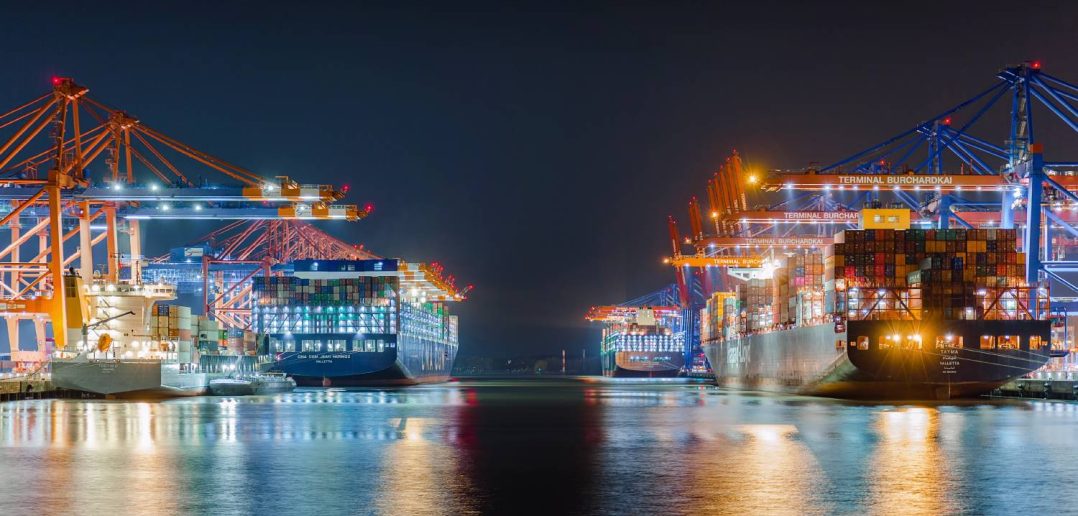In an increasingly interconnected world, geopolitical events in one region can cause a ripple effect across global supply chains.
Due to technical complexity and the concentration of large manufacturers in the Asia Pacific region, the semiconductor supply chain is especially vulnerable to disruptions. In fact, more than 65% of the semiconductor global market share could be held within one region across 50 points in the supply chain. Each of these could be considered a single point of failure, as disruptions could be caused by natural disasters, geopolitical tensions, shutdowns, etc.
A recent advisory from the NSA’s Director of Cybersecurity offered a stark reminder of the potential for military action amid rising tensions between China and Taiwan. A conflict of this magnitude could abruptly and severely affect the ability of US government agencies to source and procure critical semiconductor chips and other high-tech components critical to mission success and day-to-day operations. Given the reliance of government and military operations on state-of-the-art semiconductors, this potential for disruption requires a thoughtful approach to mitigation.
For agencies to prepare for and mitigate high-impact supply chain disruptions, decision-makers must first have clear visibility into their operations and where vulnerabilities exist. For this reason, more organizations rely on digital logistics, a transformative approach using data analytics to monitor, anticipate and respond to supply chain disruptions.
The power of digital logistics for supply chain resilience
A research paper issued in July by Brookings confirms the threat to the Department of Defense’s digital logistics from foreign actors. It emphasizes artificial intelligence and machine learning as tools to thwart these attacks. Digital logistics solutions from SAS can offer end-to-end supply chain planning that combines robust analytics with a flexible, scenario-based planning model. Our method integrates information across the supply chain, enabling organizations to see a holistic view of current operations, spot potential vulnerabilities and review recommended responsive actions.
Digital logistics is more than a virtual model of operations. By harnessing analytical optimization, digital logistics platforms deliver strategic advantages, arming organizations with advanced insights to inform production and supply chain strategies. These insights help organizations to react swiftly to sudden shifts in demand or supply, accelerated by sophisticated optimization techniques that balance supply chain costs and constraints with domestic needs.
Proactive planning is key to building supply chain resilience, but when unexpected challenges suddenly arise, the ability to swiftly correct course becomes critical. A data-driven approach to creating a flexible framework helps organizations run various recovery scenarios rapidly and accurately. By simulating potential outcomes, organizations can identify the best response and be more confident in the impact of short-term decision-making during uncertain times.
Digital logistics in action: Georgia-Pacific
Like geopolitical tensions could disrupt government supply chains, Georgia-Pacific faced a supply chain crisis during the COVID-19 pandemic. The global pulp and paper manufacturer had a robust data and analytics strategy, which helped them to mitigate the issue when demand surged by 120%.
They managed to reduce downtime by 30% and increase equipment efficiency by 10%, thereby improving production speed and reducing labor costs and waste. This comprehensive digital logistics strategy prepared them for disruptions, underlining its potential value in managing geopolitical complications.
Staying prepared for unforeseen geopolitical events
While the hope is that an escalated China-Taiwan conflict will not materialize, government agencies cannot plan around hope. Digital logistics enables agencies to quickly adjust sourcing strategies when unforeseen geopolitical events unfold, ensuring minimal disruption. But before a crisis, proactively identifying weaknesses and planning alternate strategies is the difference between following a thoughtful contingency plan and scrambling to find a solution.
Given the complexities of global supply chains and the ever-present potential for disruption, digital logistics solutions are no longer “nice-to-have” insights but “must-have” decision-making tools.
SAS is committed to partnering with organizations to build resilient, agile, data-driven supply chains capable of navigating geopolitical uncertainties.
To learn more about how our end-to-end supply chain planning can help your organization stay resilient in the face of change, check out SAS® solutions for IoT.
Jessica Curtis and Bobby Shkolnikov contributed to this article

Bobby Shkolnikov leads SAS’ IoT Division’s growth and strategy in the US Federal Government sector. He helps federal government customers harness the power of the Internet of Things (IoT) to solve complex, real-world challenges using SAS’ proven AI and advanced analytics solutions.


